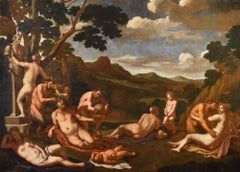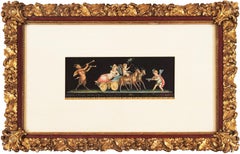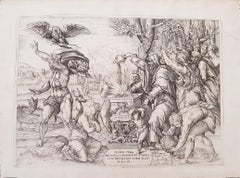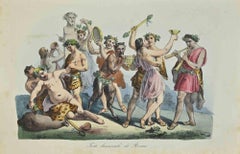Articles similaires à Bacchanale
Vous voulez plus d'images ou de vidéos ?
Demander au vendeur plus d'images ou de vidéos
1 sur 10
Giovanni Andrea PodestàBacchanale1649
1649
2 089,36 €
À propos de cet article
Bacchanal
Etching, 1649
Inscribed in the square left: "Magnificentis/simo Principi/Paolo lorda/no. II Bracci/ani Duci/Aud. P.DDD/1640; Inscribed on right: Rome apud Franciscsum Saluucium
Condition: Usual centerfolds from paper manufacture
Plate: 10 3/8 x 15 1/2"
Sheet: 11 1/2 x 16 1/2";
References:
Bartsch XX.4
Sopher Plate 145
An impression of this image is in the collections of the Philadelphia Museum of Art and the National Gallery of Art, Washington
An exceptionally rich impression in excellent condition.
From Wikipedia, the free encyclopedia
Putti as Allegory of Music
Giovanni Andrea Podestà or Giovanni Andrea Podesta (1608 - c. 1674) was an Italian painter and engraver who was principally active in Rome. His principal subject matter is children playing in landscapes with classical objects. His works show the influence of Poussin's Arcadian landscapes and bacchanals, which were ultimately derived from Titian's bacchanals.
Life
Giovanni Andrea Podestà was born in Genoa. He was formed in Genoa with Giovanni Andrea de Ferrari and Domenico Fiasella according to the information provided by the contemporary Genoese biographer Raffaele Soprani. He is also recorded as an apprentice of Giovanni Battista Paggi in 1627.
His presence is documented from in 1634 in Rome where he made drawings after the statues and ancient reliefs at the famous Giustiniani collection. These were subsequently engraved for publication in the 'Galleria Giustiniani'. The artist's career ran a course similar to that of the young Domenico Fiasella. In Rome his art evolved in contact with the works of Poussin, Andrea di Leone, Pietro Testa and the Flemish artists François Duquesnoy and Karel Philips Spierincks.
In 1650 Podesta became a member of the Accademia di San Luca in Rome. He died in Genoa.
Work
A majority of Podestà's paintings depict children playing amid classical objects in landscapes. Few of his paintings have survived and his work is now mainly known from the etchings he made himself after his compositions. In particular a series of prints published in Rome which date from 1636 to 1661 form an important source of information on his work.
Putti in a Landscape
Podestà made prints after the bacchanals of Titian, which he dedicated to powerful patrons. He dedicated a series of prints to the pleasures of wine to Paolo Giordano Orsini II, Prince of Bracciano. Orsini also owned multiple paintings by Podestà, including two landscapes and seven small paintings of seafood. A Worship of Venus etched after Titian was dedicated to Cassiano dal Pozzo and other prints of bacchanals to Fabio della Cornia. The artist clearly tried tocurry favour with the Barberini family through these dedications.[3] Cassiano dal Pozzo was known for his archaeological interests. Podestà's acquaintance with Cassiano dal Pozzo may have played a role in Podestà’s artistic development and may have put him in the circle of Poussin. This circle included Flemish artists such as the sculptor François Duquesnoy and the painter Karel Philips Spierincks who at one time or the other shared a home in Rome and also had common artistic interests. In this circle there was an interest in Classicism as well as a growing interest and admiration for the bacchanals of Titian. This found expression in copies and reproductions after Titian as well as new compositions inspired by the theme of the bacchanals. The mutual influence of the artists in this circle is clear from the fact that Podestà 's Bacchus and Ariadne (At Arte Antico) cites in the putto who scares another putto with a mask similar figures in a Drunken Silenus of the Flemish painter Karel Philips Spierincks.
The quality of his work and its closeness to the Poussin circle was such that it is often difficult to distinguish his work from compositions by Poussin and Spierincks. His work has considerable charm, a feature sometimes lacking in the work of his more illustrious contemporaries. One scholar noted that 'Although Podestà was neither a great designer nor a great draughtsman, his amusing conceits display the lighter side of the often sober classical devotees in Rome in the 1630s and 1640s.' Although a rather marginal artist, his works depicting putti at play definitely had an influence on late Genoese Baroque painting, such as on the decorative artists of the 'Casa Piola'.
The few drawings by Podesta that have been preserved show features familiar from his etchings: contorted facial expressions, small twisting figures, patches of dark cross-hatching and an interest in still-life. In their precision they are similar to and possibly derived from Sinibaldo Scorza, whose prints may have been an inspiration for Podestà's own etchings.
- Créateur:Giovanni Andrea Podestà (1615 - 1674, Italien)
- Année de création:1649
- Dimensions:Hauteur : 29,21 cm (11,5 po)Largeur : 41,91 cm (16,5 po)
- Support:
- Mouvement et style:
- Période:
- État:
- Adresse de la galerie:Fairlawn, OH
- Numéro de référence:Vendeur : FA95541stDibs : LU14014429832
À propos du vendeur
5,0
Vendeur reconnu
Ces vendeurs prestigieux sont des leaders du secteur. Ils représentent le summum en matière de qualité et de design.
Vendeur Platine
Vendeurs premium dont la note est supérieure à 4,7 et le délai de réponse de 24 heures maximum
Établi en 1978
Vendeur 1stDibs depuis 2013
809 ventes sur 1stDibs
Temps de réponse habituel : <1 heure
Associations
International Fine Print Dealers Association
- ExpéditionRecherche du devis...Expédition depuis : Fairlawn, OH
- Politique des retours
Certaines parties de cette page ont été traduites automatiquement. 1stDibs ne garantit pas l'exactitude des traductions. L'anglais est la langue par défaut de ce site web.
Garantie d'authenticité
Bien qu'il soit peu probable que la situation se présente, dans le cas où vous rencontreriez un problème d'authenticité d'un article, contactez-nous dans un délai d'un an pour obtenir un remboursement intégral. DétailsGarantie de remboursement
Si votre article n'est pas conforme à la description, est endommagé pendant le transport ou ne vous est pas livré, contactez-nous sous 7 jours pour obtenir un remboursement intégral. DétailsAnnulation sous 24 heures
Vous disposez d'un délai de 24 heures pour annuler votre achat sans motif.Des vendeurs professionnels agréés
Nos vendeurs de renommée mondiale doivent respecter des normes strictes en matière de service et de qualité, afin de préserver l'intégrité de nos fiches produit.Garantie d'alignement des prix
Si vous constatez qu'un autre vendeur a mis en vente le même article à un prix inférieur sur un autre site, nous nous alignerons sur ce prix.Livraison en toute confiance à l'international
Notre réseau de transporteurs de premier ordre propose des options d'expédition spécialisées dans le monde entier, y compris des livraisons personnalisées.Plus d'articles de ce vendeur
Tout afficherL'enfant Jupiter allaitant de la chèvre Amaltheia (La naissance d'Apollon)
Par Luigi Quaini
L'enfant Jupiter allaité par la chèvre Amaltheia
(La naissance de Jupiter)
Craie rouge et lavis sur papier blanc cassé, v. 1700
Non signé
Attribué à Quaini par Dwight Miller, le spé...
Catégorie
XVIIIe siècle et antérieur, Baroque, Dessins et aquarelles - Figuratif
Matériaux
Craie
Scène II, Le Nozze Degli Dei
Par Stefano Della Bella
Scène II, Le Nozze Degli Dei
Gravure, 1637
Signé dans la plaque en bas à gauche
La scène dépeint le moment initial où Diane est révélée, entourée de ses nymphes, célébrant une chasse...
Catégorie
années 1630, Maîtres anciens, Estampes - Paysage
Matériaux
Eau-forte
Ostiakes
Par Cornelis de Bruijn
Ostiakes
Gravure, 1718
D'après : Voyages de Corneille le Brun par la Moscovie, en Perse, et aux Indes Occidentales (traduction française, 1718), Chapitre XXI
Les Ostyaks font partie ...
Catégorie
années 1710, Maîtres anciens, Estampes - Paysage
Matériaux
Gravure
The Garden of Love (d'après Peter Paul Rubens [1577-1640])
Par Christoffel Jegher
Le jardin d'amour (d'après Peters Paul Rubens [1577-1640])
Diptyque gravé sur bois, c. 1633-1636
Chacune des deux feuilles est signée dans la plaque en bas à droite
Une impression po...
Catégorie
17ème siècle, Maîtres anciens, Estampes - Figuratif
Matériaux
Gravure sur bois
Eurito Echione e Etalide Argonote
Eurito Echione e Etalide Argonote
Gravure, 1664
d'après Remigio Cantagallina
D'après : La manifique carousel fait sur le fleuve de l "Ane a Florence, pour le Mariage du Grand Duc, (1...
Catégorie
années 1660, Maîtres anciens, Estampes - Animaux
Matériaux
Eau-forte
Une paire de dessins ovales pour Ovid, Metamophoses
Par Charles Joseph Natoire
Une paire de dessins ovales pour Ovid, Metamophoses
Gauche : Le triomphe d'Amphitrite (Livre I)
Droit : Diane et Actéon (Livre III)
De : Ovide, Métamophoses
Ces études mythologiques...
Catégorie
Années 1760, Baroque, Dessins et aquarelles - Portrait
Matériaux
Encre, Stylo
Suggestions
Bacchanale Mythologique Peinture Carpioni Huile sur toile 17ème siècle Art ancien
Giulio Carpioni (Venise, 1613 - Vicence, 1678), Attribuable à
Bacchanale
Huile sur toile 98 x 132 cm. - Dans un cadre 120 x 154 cm.
Ce tableau de grande qualité, magnifiquement conservé, est un exemple raffiné de l'œuvre de Giulio Carpioni (Venise, 1613 - Vicence, 1678), l'un des peintres vénitiens les plus talentueux du XVIIe siècle. Elle représente une "Bacchanale" typique, un sujet de prédilection auquel il est revenu à de nombreuses reprises.
Elle représente une fête en l'honneur de Bacchus, le dieu romain du vin (ou Dionysos dans la mythologie grecque), caractérisée par des personnages mythologiques nus ou semi-nus, tels que des satyres, des nymphes, des maenades et des chérubins, qui s'adonnent à l'oisiveté et à la consommation de vin dans un cadre naturel, s'adonnant à des plaisirs débridés, aux libations, à la danse, à la musique et à l'érotisme.
Formé par Padovanino et influencé par le classicisme de la tradition vénitienne du XVIe siècle, Carpioni s'est beaucoup inspiré des premières œuvres du Titien, notamment de ses compositions mythologiques et, en particulier, de ses célèbres Bacchanales.
C'est au cours de son voyage à Rome qu'il a eu l'occasion de voir et d'étudier la "Bacchanale de l'Andrius", aujourd'hui conservée au musée du Prado à Madrid, datant d'entre 1523 et 1526. Il a été fasciné par le mouvement dynamique, la sensualité des corps et les jeux d'ombre et de lumière dans cette œuvre. Il a donc retravaillé de nombreux personnages du tableau du Titien, comme la nymphe nue et sensuelle allongée dans le coin inférieur gauche.
En se déplaçant vers la droite, on voit l'amusant "puer mingens...
Catégorie
17ème siècle, Maîtres anciens, Peintures
Matériaux
Huile
13 312 € Prix de vente
20 % de remise
Bacchanale, milieu du siècle à Pompeii, mythologie romaine, Bacchus, néoclassique
Par Giovanni Gallo
Signée en bas à droite, "Gallo Giovanni" pour Giovanni Gallo (italien, 20e siècle) et datée de 1954.
Titré en bas à gauche, "Eseguito a Pompei, 'Trionfo di Bacco'" (Fait à Pompéi, '...
Catégorie
années 1950, Dessins et aquarelles - Nus
Matériaux
Papier, Gouache
Le Sacrifice d'Iphigenia
Par Nicolas Beatrizet
Gravure et pointe sèche en noir et blanc sur papier filaire, représentant le mythe du sacrifice d'Iphigénie. Sur l'autel est inscrit "Iphigénie" en lettres capitales. Dans la marge i...
Catégorie
XVIe siècle, Maîtres anciens, Estampes - Figuratif
Matériaux
Pointe sèche, Eau-forte
Utilisations et douanes - Feast bacchanal - Lithographie - 1862
Us et coutumes -Bacchanal Feast est une lithographie sur papier réalisée en 1862.
L'œuvre appartient aux Us et coutumes de tous les peuples de l'univers : "Histoire du gouvernement,...
Catégorie
années 1860, Moderne, Estampes - Figuratif
Matériaux
Lithographie
Bacchanales - Gravure de P. Fontana d'après A. Tofanelli - 1821
Par Pietro Fontana
"Baccanale con Bacco, Sileno, Fauni, e Menadi" (Baccanale avec du vin, du silence, des fruits et des légumes) est une belle gravure au burin en noir et blanc sur papier, réalisée pa...
Catégorie
années 1820, Moderne, Estampes - Figuratif
Matériaux
Eau-forte
Huile sur toile du Maestro Bacchanal, 18e siècle
Maestro français du XVIIIe siècle
Titre : Bacchanale
Médium : Huile sur toile
Dimensions : sans cadre 24 x 30 cm - avec cadre 33,5 x 39 cm
Cadre en bois de forme antique laqué en cou...
Catégorie
XVIIIe siècle, Maîtres anciens, Peintures - Figuratif
Matériaux
Huile, Toile
10 886 € Prix de vente
20 % de remise
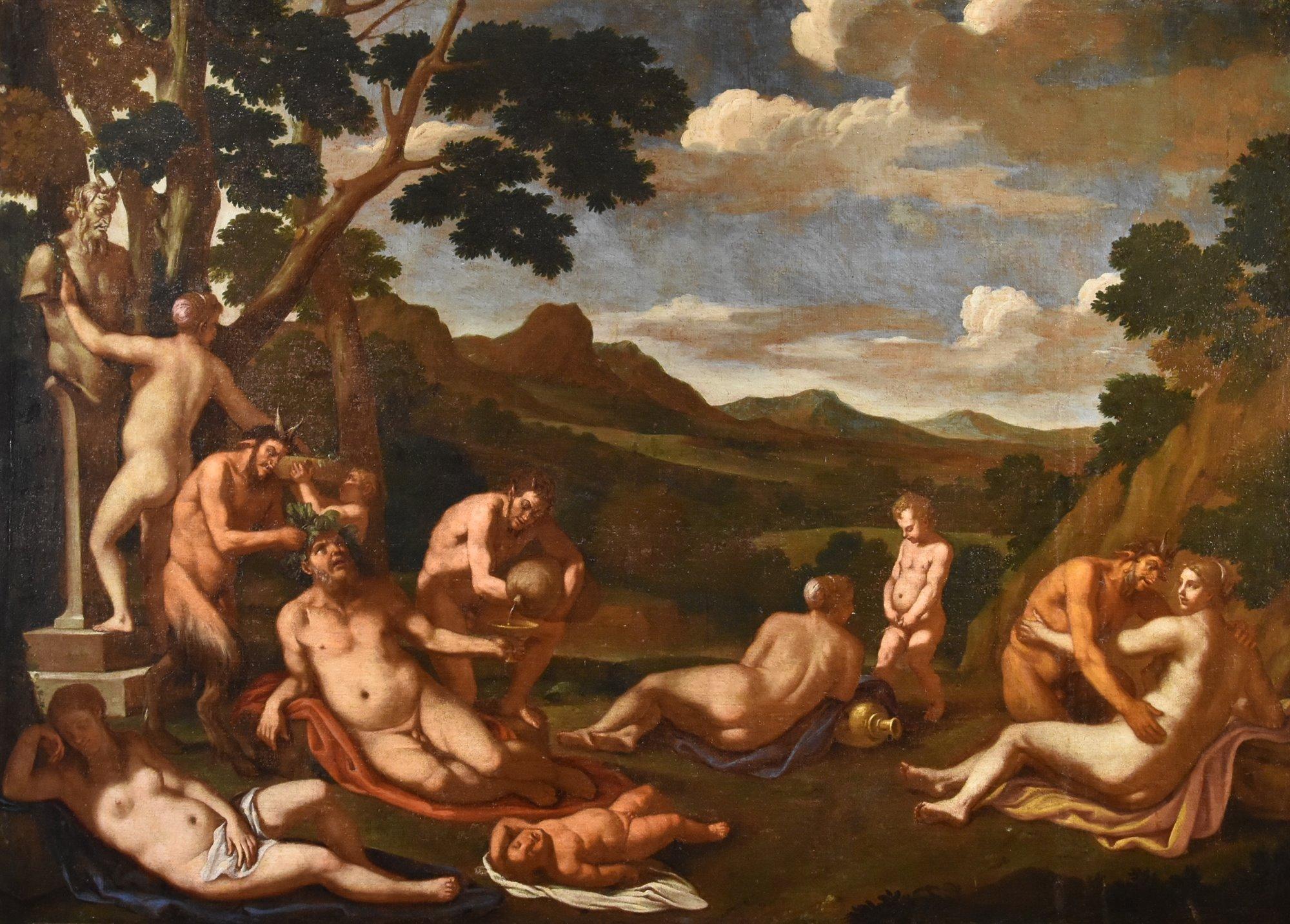
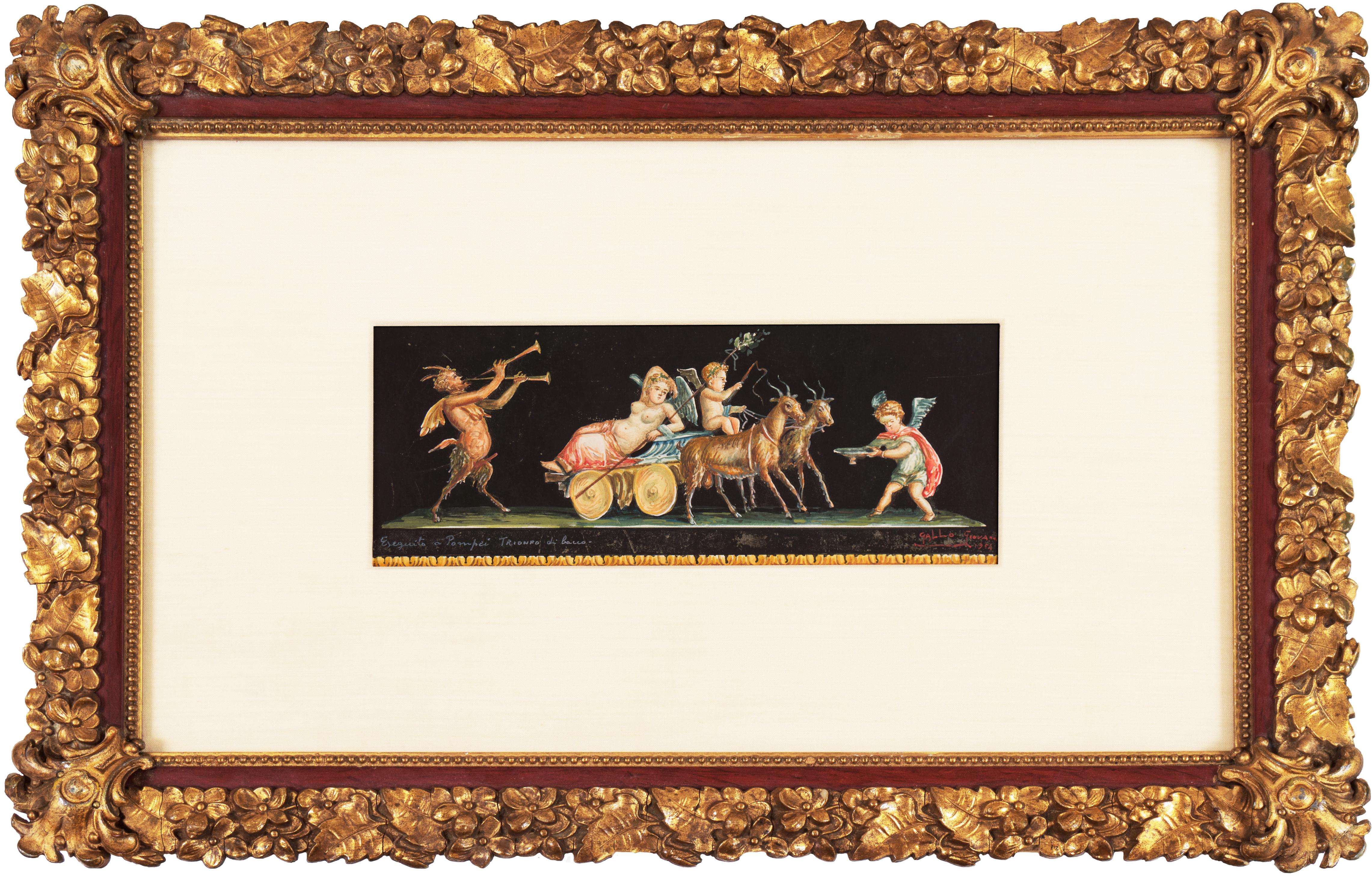
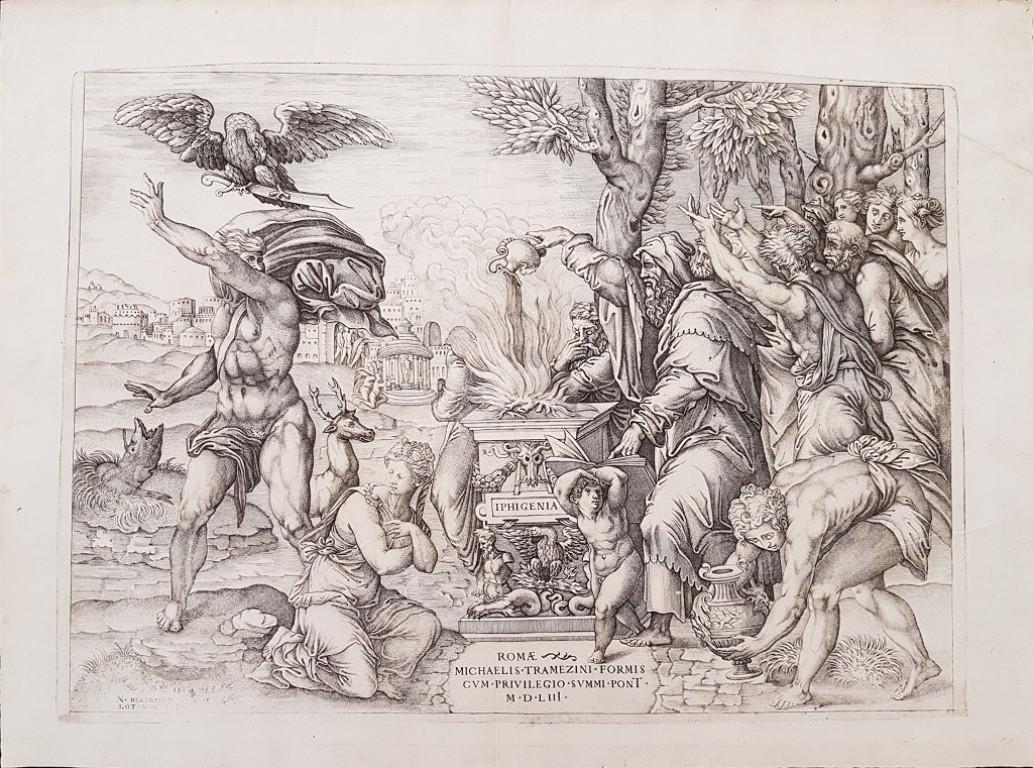
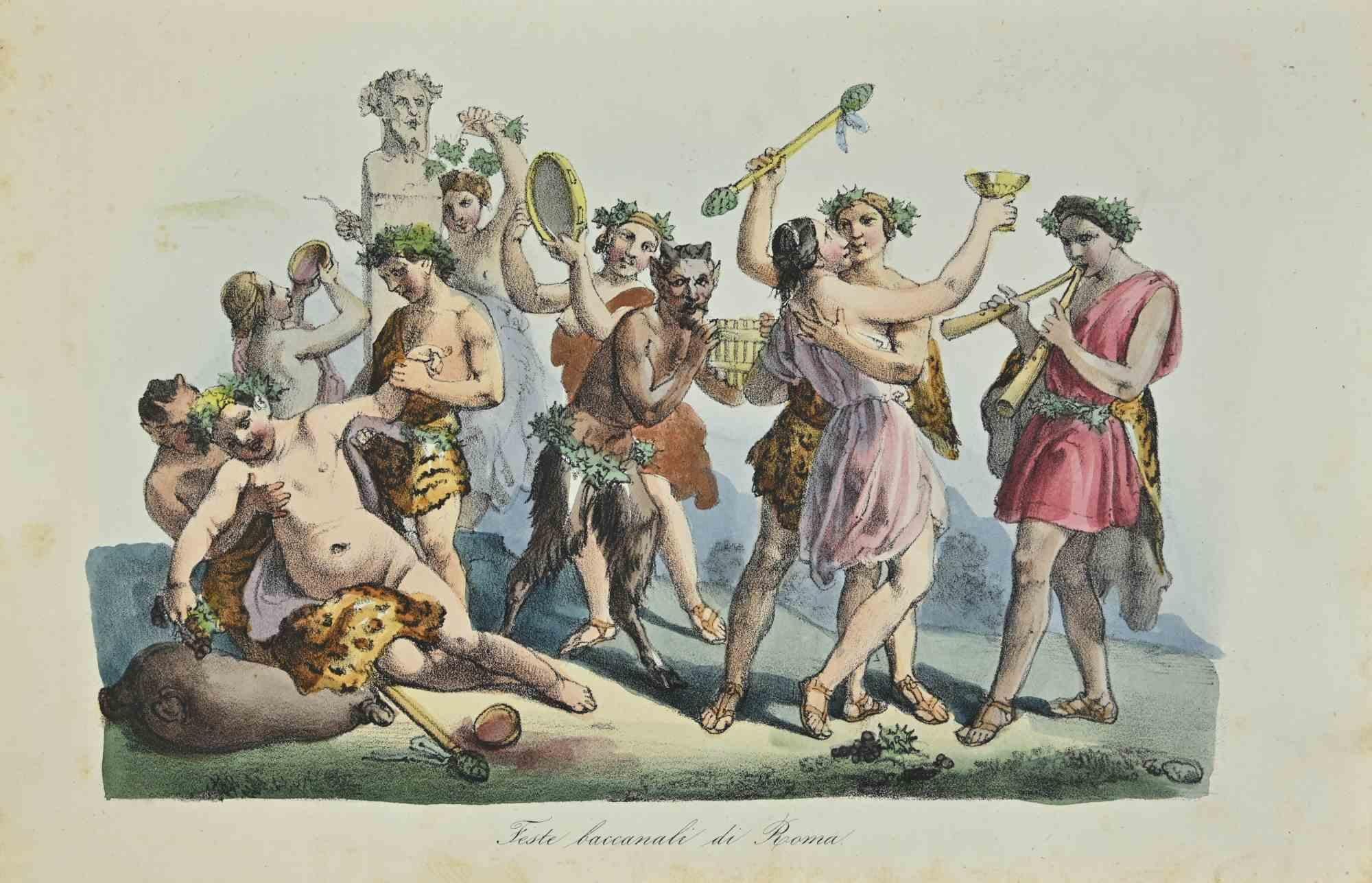
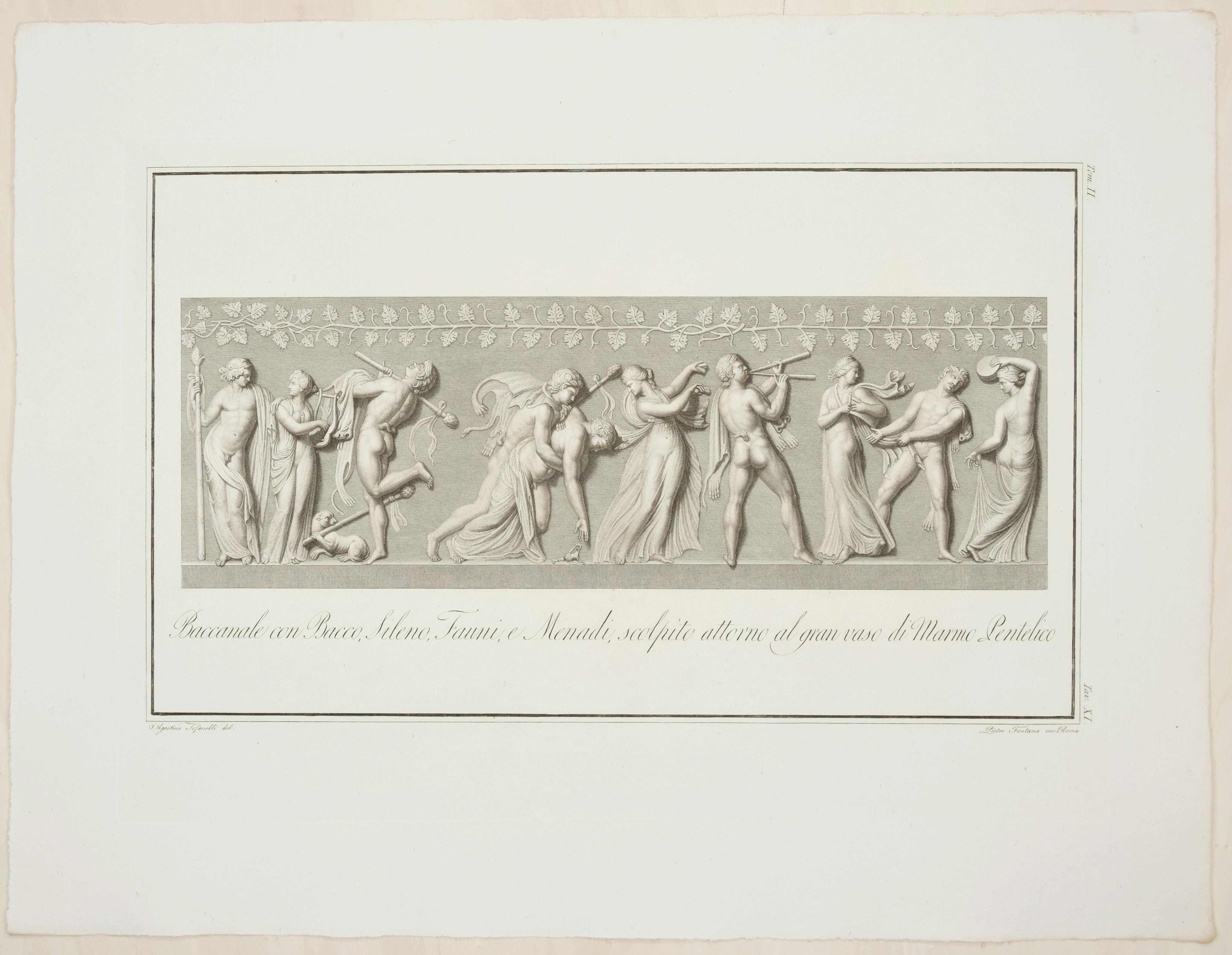
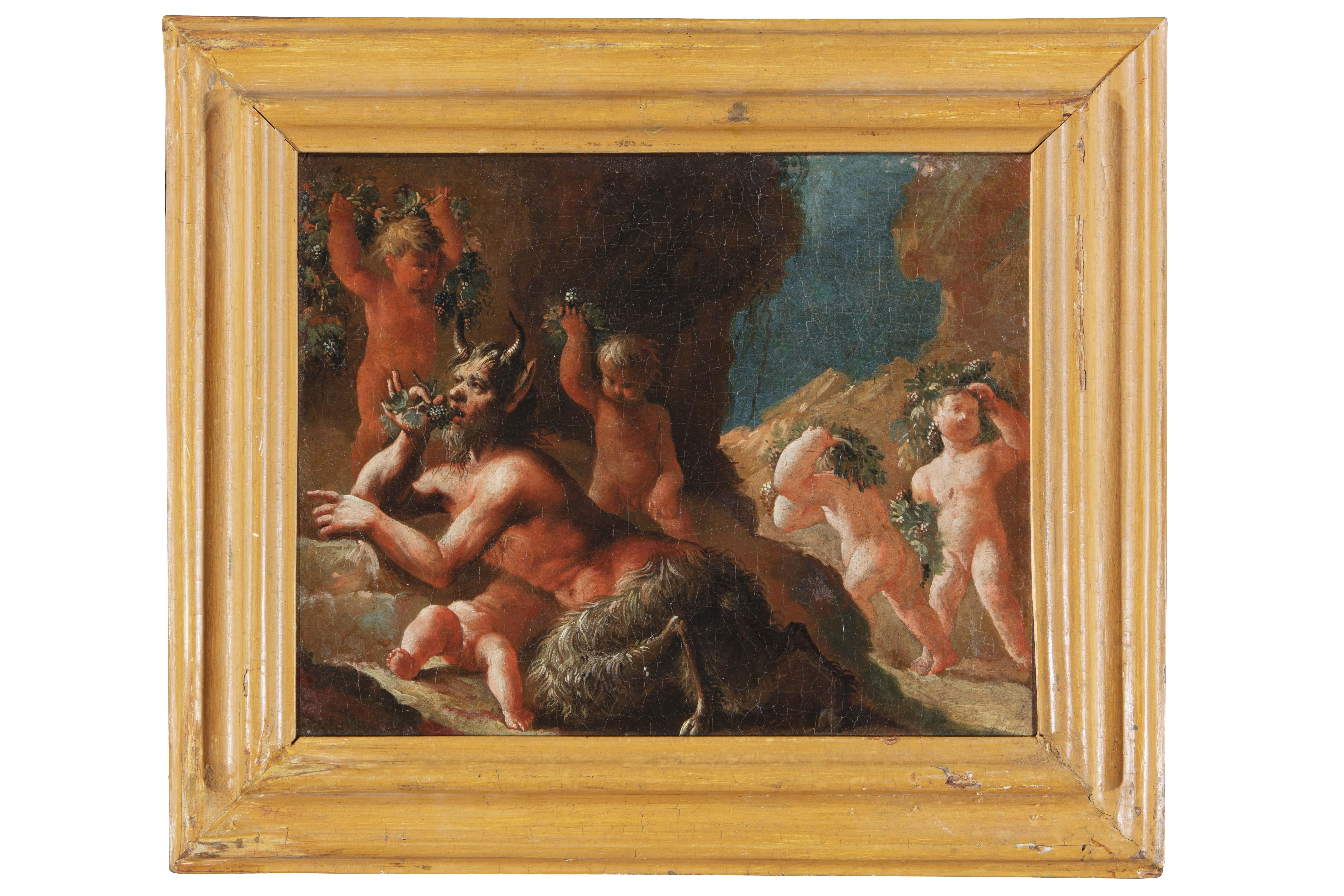
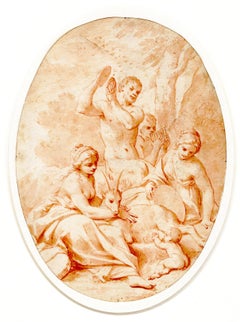
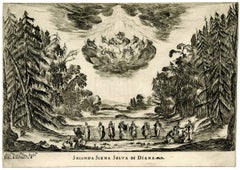
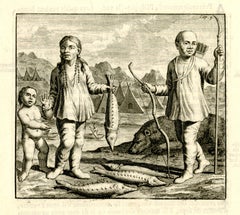
![The Garden of Love (d'après Peter Paul Rubens [1577-1640])](https://a.1stdibscdn.com/christoffel-jegher-1596-1652-3-netherlands-prints-works-on-paper-the-garden-of-love-after-peter-paul-rubens-1577-1640-for-sale/a_140/a_147163221719706543029/FA1849_montage_master.jpg?width=240)
